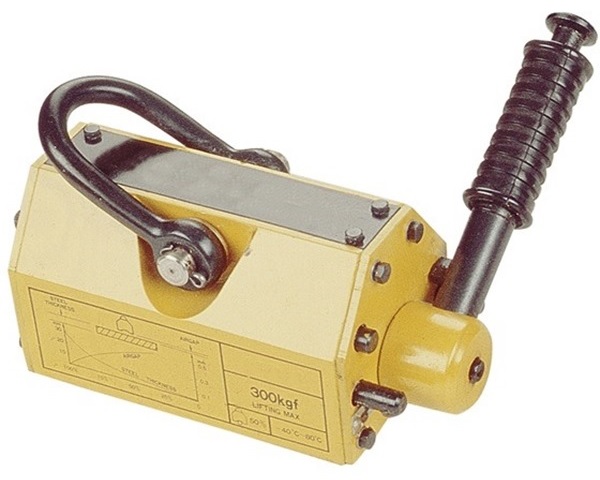
A lifting magnet can be used to lift products made of steel without the need for slings. Of course, as with any piece of heavy lifting equipment, it’s important to use lifting magnets correctly – improper use may cause the magnet to fail, potentially damaging the load and posing a serious safety risk to anyone who happens to be nearby.
Before you attempt to move any heavy loads with a permanent lifting magnet, take a few minutes to familiarise yourself with the recommendations below. You should always study the manufacturer’s operating safety instructions and carry out a thorough risk assessment before you start.
Safe Use of Lifting Magnets
- Before using a lifting magnet, make sure both the magnet itself and the surface of the load are free of dirt and debris. This will help to ensure good contact between the two surfaces.
- Make sure the load in question can be lifted magnetically. Lifting magnets will not work on certain materials; for instance, some stainless steel products are not magnetic.
- Do not exceed the magnet’s maximum lifting capacity. You should also check the weight capacity of any other piece(s) of lifting equipment you’re using, such as a gantry crane. Remember to account for the weight of the magnet itself.
- Avoid lifting multiple items simultaneously, even if their total combined weight would not exceed the magnet’s lifting capacity. If lifting a bundle of materials, put measures in place to prevent pieces falling off during lifting.
- Check the minimum thickness measurements for your magnet. The instructions that come with your magnet will tell you the minimum thickness of material that the magnet is able to lift. If it says the magnet has a minimum thickness of 10mm of steel, then applying the magnet to 1mm thick steel means 90% of the maximum capability is being lost. Thinner materials can’t absorb all the magnetism being emitted, which means they’re more likely to peel away from the magnet.
- Lifting magnets should only be operated by trained personnel. Employees with pacemakers or other active implants should stay clear of strong magnets as the electromagnetic fields (EMFs) may cause problems.
- Try to minimise crane swing while lifting. Keeping the load horizontal will help the magnet to stay firmly attached. If the crane’s swing causes the load to tip past a 10° angle, lifting capacity will begin to fail. Magnets can be affixed in a vertical position (known as ‘sheer position’), but it’s five times easier to slide a magnet off when vertically attached than when horizontally attached.
- If you’re using multiple magnets, make sure the magnets are separated by a large gap to ensure they do not interfere with each other.
- Operating temperature will affect the performance of your lifting magnet. If you subject a magnet to temperatures beyond its maximum operating temperature, it will lose performance.
- Corrosion also affects magnetic performance. A lot of lifting magnets are used outdoors, where they are exposed to the elements. If the magnet gets wet and there is damage to the plating, the magnet may rust and stop working properly.
Following these recommendations should help to ensure that your lifting magnet functions correctly. If you have any questions, please don’t hesitate to contact the SafetyLiftinGear team for further advice. We also recommend familiarising yourself with the Health & Safety Executive’s guidance on the safe use of magnetic lifting devices.
Lifting Magnets

